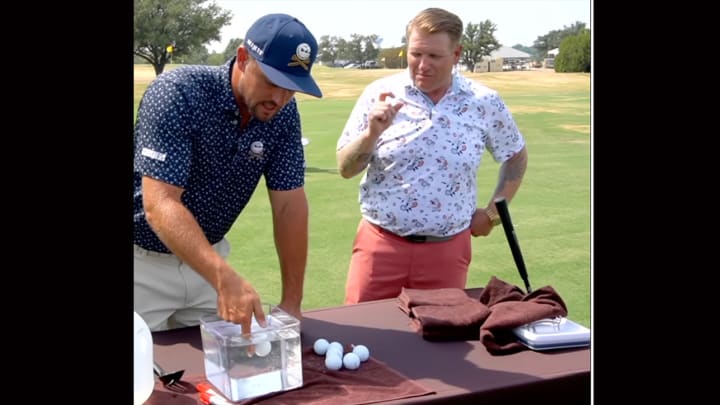Inside Bryson DeChambeau’s ‘Salted Golf Balls’ Preparation

A lot has happened in the ensuing years, but when Bryson DeChambeau first came onto the pro golf scene he was known as a “mad scientist” for his methodical approach to his game, headlined by a revolutionary set of single-length irons that he felt allowed him to make a more repeatable swing. And even through his rise up the ranks and move to LIV Golf, he's never stopped tinkering.
This year, after a huge major-championship season that included a win at the U.S. Open and runner-up at the PGA Championship, DeChambeau spent some time with SI Contributor Dan Evans, and together they walked through DeChambeau's process for treating golf balls before putting them into play.
DeChambeau treats all of his competition golf balls with Epsom salt. Yes, jokes were made.
But there's a method to the madness, as DeChambeau suspends the balls in water to find out which side of the ball is heaviest. He then marks the ball in that spot, and anytime he tees it up, he places that heavy side down, which he says is best for a consistent ball flight.
Check out the video above, and SI Golf's social feeds to see the full breakdown from our visit with DeChambeau—and maybe you'll decide to add Epsom salt to your own golf preparation.
